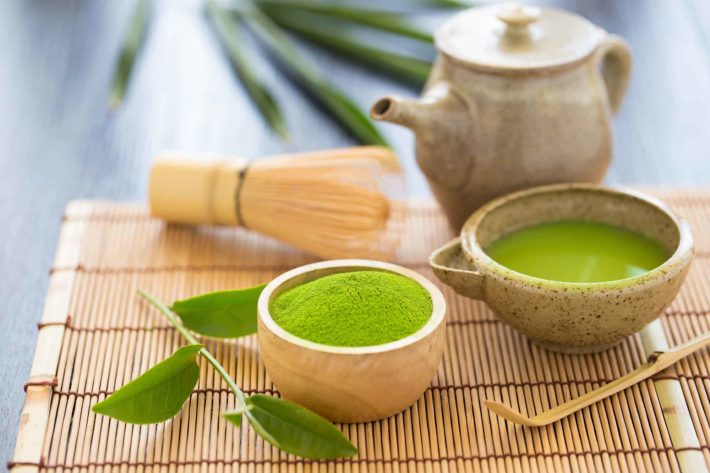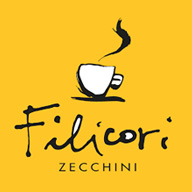The Japanese tea ceremony is a “supporting pillar” of Japanese culture, thanks to the multitude of meanings it has which transcend the mere consumption of the drink. A fascinating and symbolic ritual which aims at finding absolute harmony, living each moment of the present to the full and involving procedures, places and particular utensils. So let’s discover how the Japanese tea ceremony works and which values and rules characterize it.
Cha no yu: the Japanese tea ceremony
The term Cha no yu – which literally means “hot water for tea” – refers to the Japanese tea ceremony, a centuries-old practice made up of rituals and coded gestures which has its roots in the principles of Zen Buddhism. Also known as Chadō o Sadō, or rather “The Way of Tea”, this practice has a meaning which goes beyond the simple preparation and consumption of the tea. This ritual actually carries with it an aesthetic, social and spiritual value: during the ceremony those participating should momentarily detach from the world outside, freeing the mind to enjoy the experience in total harmony. There are four principles on which Cha no yu is based – Harmony, Respect, Purity and Tranquility – while the tea used for the occasion is usually Matcha tea, a variety of green tea in powder form prepared in suspension. Let’s now look at the main peculiarities of this ritual.
The tea room and the utensils needed for preparation of the drink
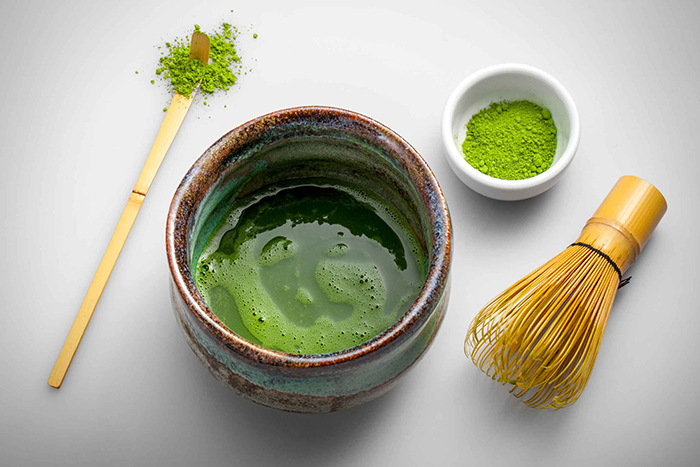
The tea ceremony takes place within small rooms, called chashitsu, generally detached from the rest of the house and surrounded by a garden. The guests must wash their hands well before entering, while the low entrance doorway obliges them to bow down when they enter as a sign of humility. The furnishings inside are of a refined simplicity; generally, the only decoration is in the form of an alcove, called tokonoma, in which a roll of parchment and some seasonal flowers are placed. These are elements carefully chosen by the owner of the tea house specifically for that occasion, as are the utensils needed for the preparation of the tea: these too are carefully chosen each time with extreme care. Every tool also has a precise name and position: some of the most important ones are the bamboo whisk for stirring the tea (chasen), the cup for drinking the tea (chawan), the wooden ladle for pouring the water into the cup (hishaku) and the kettle for heating the water (kama).
The rules of conduct for the Japanese tea ceremony
The etiquette prescribed for such occasions involves both the host and the guests. In fact, the guests are obliged to respect precise rules regarding gestures and behavior, which also affect clothing and communication. The latter, for example, must use very specific phrasing, while the clothing must be of a certain sobriety: if someone were to dress in western clothing rather than in a Kimono, it would be better to avoid bright colors, jewelry and perfumes. According to the protocol of Cha no yu, the preparation of the tea must follow precise moments, which may very slightly according to the school and even according to the season or the time of day in which the ceremony is performed.
How the tea ceremony works in Japan
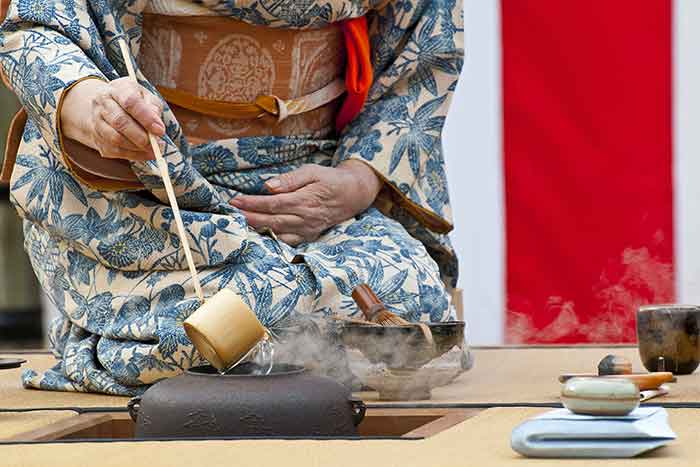
Let’s take a look now at how the tea ceremony works exactly and what are the main steps. First of all, during the ritual, the guests are kneeling on the tatami – the mat made of rice reeds used in Japan to cover floors – and each one of them plays a very precise role: the first guest, for example, is called shokyaku and that is the person who has the responsibility of communicating with the master of ceremonies. The whole procedure lasts four hours and includes different stages: a first stage where the kaiseki, a small meal, is served; a second stage in which koicha, a more dense tea, is drunk; and a third stage where people drink usucha, the lightest tea. Besides this version, there is also a shorter version of the ceremony which consists of only the usucha part.
The most simple procedure starts with the cleaning of the utensils by the host, after which there is the preparation of the tea; both of these activities are performed in front of the guests who, in this phase, are also invited to eat something sweet. Then, the master of ceremonies places a bowl of tea in front of the first guest, who, according to the protocol, must turn to their neighbor and ask permission to serve themselves first. The Cha no yu procedure also has specific rules governing how the drink is consumed. According to etiquette, the diner must hold the cup in their right handed position it on the palm of their left hand; furthermore, before drinking, the drinker must also turn the cup round so that the front of the cup is facing their host. After drinking the tea in short sips and praised the aroma, the guest is expected to admire the cup, clean the part from which they have drunk and place it on the tatami in front of them. This same procedure is then repeated for every participant; when everyone has tasted the tea, the shokyaku asks permission to be able to inspect the utensils, an authorization which is conceded allowing the other guests in turn to inspect them.
The birth of the Tea Ceremony in Japan
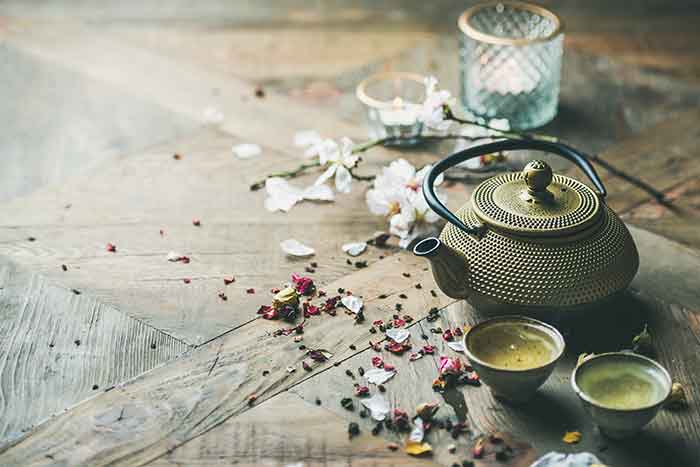
So where did the Japanese tea ceremony come from? The man who took tea culture to Japan, the culture which was to evolve and become the ritual that we know today, was the monk Eisai (1141 – 1215). Indeed it is said that, after travels in China, in the XII century, this monk introduced the use of powdered tea and the way of preparing it into Japan. It was later the monk Murata Shukō (1423 – 1502) who developed the tea ceremony according to the simplicity and sobriety that characterize it today. If Murata is considered to be the father of this practice, Takeno Jōō (1502 – 1555) and his pupil Sen no Rikyū (1522 – 1591) had a further influence on the ceremony, giving it the structure that we know now. The art of preparing tea according to the dictates of the Cha no yu is taught today in many schools, many of which have been developed starting from the teachings of Sen no Rikyū.

